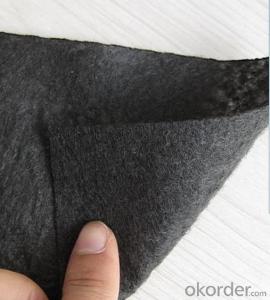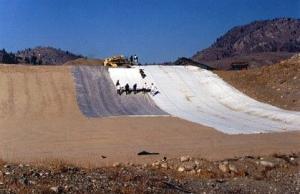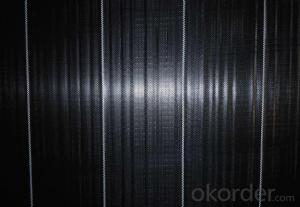Woven and Non Woven Geotextile Silt Fence with Pocket/Polypropylene Woven Fabric
- Loading Port:
- China main port
- Payment Terms:
- TT OR LC
- Min Order Qty:
- 5000 roll
- Supply Capability:
- 100000 roll/month
OKorder Service Pledge
OKorder Financial Service
You Might Also Like
1. Woven Fabric Introduction
Spunbonded PP non woven weed control mat is made of environmentally friendly raw materials, pp spunbond nonwoven fabric. It used to prevent the growth of weed, without the use of potentially dangerous chemical sprays or labor intensive hoeing. Once installed, weed mat will continue providing protection for years without maintenance.
They are permeable fabrics, which allow air, water and nutrients to pass through, and designed to block out the sun to reduce photosynthesis and stop weed growth.




2. Woven Fabric Feature:
1. Weed suppressant and drainage control landscaping fabric
2. Spun bonded non-woven fabric – will not fray when cut
3. Easy to use
4. Environmentally friendly
5. Allows water, air and nutrients through, suppressing weeds without the use of chemicals
6. Good alternative to Plantex® where cost is a factor
7. UV Stabilised
8. Reduces the level of watering required due to the slower rate of water evaporation
3. Woven Fabric Function:
1. Cover crops in the ground surface,prevent weeds and against the insect
2. Controlling soil humidity and the temperature
3. Does not affect the growth of the crops
4. Protects plants from harmfully solar radiation
5. Air permeability, water permeability help crops growth.
6. Mothproof, eco-friendly, breathable, anti-bacteria, tear-resistant, fusible
4. Woven Fabric Applications:
1. Weed block for landscaped garden beds
2. Permeable liners for planters (stops soil erosion)
3. Weed control under wooden decking
4. Geotextile for separating aggregate / soils under walkway blocks or bricks
5. Assists in preventing paving from settling unevenly
6. Landscape fabric prevents soil erosion
5. FAQ:
Q1: What is your minimum order quantity?
A:The minimum order quantity is 5000 ,but it is negotiable.
Q2:What is your payment terms?
A: T/T,Western Union,Paypal,L/C...
Q3:What is your delivery time?
A:Production time usually costs 2-20 days.
Waiting to cooperate with you!
- Q: Characteristics of filament geotextile
- It can replace the traditional engineering materials and construction methods, construction safer, and contribute to environmental protection, can be more economical, effective and lasting solution to the basic problems in the construction. Filament geotextile has good mechanical function, good water permeability, and can be anti-corrosion, anti-aging, with isolation, filtration, drainage, protection, stability, reinforcement and other functions, to adapt to uneven grass-roots, Damage, creep small, long-term load can still maintain the original function. Filament geotextile characteristics: strength - the same weight under the specifications, the tensile strength are higher than other acupuncture non-woven fabrics; anti-ultraviolet light - with high UV resistance; high temperature resistance - resistance High temperature up to 230 ℃, high temperature remains structural integrity and the original physical properties; permeability and flat drainage - geotextile thick and is needle-shaped, with good surface drainage and vertical permeability, years later Can maintain this performance; creep resistance - geotextile creep resistance is better than other geotextiles, so long effect is good. It can resist the erosion of common chemical substances in soil and resistance to gasoline, diesel and other corrosion; ductility - geotextile under a certain stress has a good elongation, so that it can adapt to uneven irregular base; Cloth technical features: thick geotextile, geotextile can guarantee the three-dimensional porosity, is conducive to the realization of excellent hydraulic performance. Geotextile break strength has a great advantage, especially for retaining walls and embankment reinforcement. Geotextile indicators are more than the national standard, is an excellent geotextile reinforced materials.
- Q: What are the specifications for geotextiles in railway projects?
- The specifications for geotextiles in railway projects typically include factors such as material type, weight, strength, permeability, and durability. These geotextiles are required to have high tensile strength and puncture resistance to withstand the heavy loads and dynamic forces exerted by train traffic. They should also possess appropriate permeability to allow for effective drainage and prevent water accumulation. Additionally, geotextiles used in railway projects should be chemically stable, resistant to degradation from UV exposure, and capable of withstanding various environmental conditions.
- Q: What are the different factors that affect the performance of geotextiles?
- There are several factors that can affect the performance of geotextiles. These include the type and quality of the materials used, the design and construction of the geotextile, the installation and maintenance practices, the environmental conditions such as temperature and moisture, and the load and stress applied to the geotextile. Additionally, factors such as chemical exposure, biological activity, and aging can also impact the performance of geotextiles.
- Q: How do geotextiles improve the performance of dams?
- Geotextiles improve the performance of dams by providing various benefits such as erosion control, filtration, separation, and reinforcement. They prevent soil erosion by stabilizing the soil and preventing the loss of fine particles. Geotextiles also act as a filtration layer, allowing water to pass through while retaining soil particles. They provide separation between different soil layers, preventing intermixing and maintaining the stability of the dam structure. Additionally, geotextiles can reinforce the soil, increasing its strength and improving the overall stability and durability of the dam.
- Q: Can geotextiles be used in erosion control in agricultural fields?
- Yes, geotextiles can be used in erosion control in agricultural fields. Geotextiles provide a barrier that helps prevent soil erosion by stabilizing the soil and reducing water runoff. They can be used in various erosion control applications such as slope stabilization, sediment control, and erosion prevention on agricultural fields.
- Q: Now geotextile price quota how?
- 2017 geotextile price cheaper than last year, the current price of raw materials is relatively stable production. Geotextile classification of many, you ask more general, so no way to give you a detailed offer. Different technical requirements are uneven prices, but the overall price has come down, and is now the lowest price since 2017.
- Q: What are the factors to consider when selecting geotextiles for embankment stabilization?
- When selecting geotextiles for embankment stabilization, there are several important factors to consider. These include the strength and durability of the geotextile, its filtration and drainage properties, its compatibility with the soil and other materials, and its ability to withstand environmental conditions such as UV exposure and chemical exposure. Additionally, factors such as cost, installation requirements, and project-specific needs should also be taken into account.
- Q: What is the representative batch of geotextile?
- Geotextile batch is 2000 square meters.
- Q: 300 grams of non-woven geotextile piercing strength is how much
- First of all, according to what you said 300g non-woven geotextile should be polyester staple fiber non-woven geotextile. Polyester staple fiber non - woven geotextile implementation of the national standard GB / T - 2008 standard. According to GB / T-2008 standard anti-puncture strength (standard is CBR burst strength) requirements, 300g national standard geotextile anti-piercing strength should be ≥ 1.5KN.
Send your message to us
Woven and Non Woven Geotextile Silt Fence with Pocket/Polypropylene Woven Fabric
- Loading Port:
- China main port
- Payment Terms:
- TT OR LC
- Min Order Qty:
- 5000 roll
- Supply Capability:
- 100000 roll/month
OKorder Service Pledge
OKorder Financial Service
Similar products
Hot products
Hot Searches
Related keywords


































